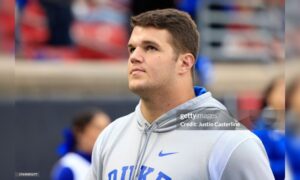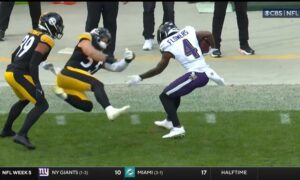Yesterday, it was revealed that the NFL Draft Advisory Board was revising the manner in which it provided feedback to underclassmen who submitted to the board for a draft grade. Now the league has gone into much deeper detail into the rationale behind the changes.
To briefly recap, the NFL Draft Advisory Board will now only grade players as either first- or second-round grades or “neither”, which is the equivalent of suggesting that the player remain in school. Grades previously included first-, second-, and third-round, post-third-round, and not draftable.
In addition to the aforementioned change, the board has also placed a cap on the number of players from each school that can apply for feedback at five. Schools can request for an exception if the available talent warrants it. 11 players from LSU applied for feedback last season.
As it turns out, the reasoning behind the changes, at their heart, are simply pragmatic, as the statistical output reveals.
According to the league’s own literature sent out to college players and coaches, from 2012 to 2014, 73.7 percent of players given first-round grades were drafted in that round; 85.4 percent of second-round graded players were drafted by the second round; after that, the accuracy takes a steep decline.
Only 52.9 percent of players given a third-round grade were taken by the third round. Meanwhile, almost 53 percent of players given a third-round or later grade were not even drafted.
Nine of the 21 players who entered the draft last year with a third-round grade were drafted after the third round, with three of them not being drafted at all.
The statistics for underclassmen are even more worrying. 45 of the 107 college players with eligibility remaining who entered the draft last year were not drafted, and the majority of them failed to sign with a team as a free agent following the draft.
The league claims that underclassman draft success has been nosediving. 82 percent who entered the draft in 2012 were drafted; 70 percent were drafted in 2013; last May, just 62 percent managed to be drafted.
They also make the case for staying in school by pointing toward some success stories of players who applied for a draft grade, were disappointed with their performance, and elected to remain in school.
12 players who received at 4th-7th-round grade a year ago were drafted within the top 64 picks this year, including four in the first round.
If you’ll remember, Pittsburgh Steelers center Maurkice Pouncey’s brother, Mike Pouncey, elected to stay in school in 2010 rather than enter the draft with his brother in order to improve his stock. In doing so, he was drafted 15th overall in 2011, three spots in front of where Maurkice was taken.







